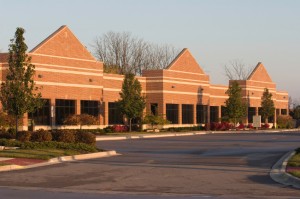Pavement Deterioration
Over time, even the best pavement begins to deteriorate. That is just the way it is. Between the weather, water infiltration, freeze-thaw effect, beating sun, and normal wear and tear, your pavement – all pavement – takes a beating. In fact, it is estimated that 90% of all asphalt roads in the United Sates have significant problems due to the deterioration of the base and sub-base material because of water infiltration. However, with proper maintenance your pavement can be saved.
Pavement Maintenance
Remember, pavement begins deteriorating as soon as it is laid and maintenance can begin at any time, not just when visible damage is present. For beginners, you can sweep your pavement from time to time to remove debris and other materials that may damage your concrete or asphalt. Another effective maintenance method is sealcoating, which helps preserve the natural black color of your asphalt while also delaying eventual deterioration.
Even when damage is visible, in the form of cracks and potholes, there is still hope for your pavement. Crack filling, pothole repair, and asphalt patching can help prolong the life of your pavement and prevent premature pavement failure. Conversely, failing to maintain your asphalt is like signing a death wish for your pavement.
When not filled properly, cracks allow water to penetrate the base and sub-base, deteriorating your pavement from the inside out. Once water enters the base, the aggregate (limestone) absorb the water expand in volume and become soft, thus causing internal stress which accelerates the development of more and larger cracks.
Pavement Maintenance from PTG Enterprises
Since 2001, PTG Enterprises, a full service commercial asphalt contractor in Baltimore, Maryland, has set the standard for quality asphalt work in the area, paving thousands of miles of asphalt parking lots. We know a thing or two about asphalt maintenance, too. So do yourself a favor the next time you have an asphalt project. Call PTG Enterprises, the asphalt contractor that cares about you, the customer.
In fact, when you hire PTG, you’ll work with owner Patrick Gillen from start to finish, from the initial site visit and pre-construction meeting to the final walk-through.
If you have any questions about Pavement Deterioration and Maintenance or if you are looking for an asphalt contractor in the Baltimore, Maryland area, please contact PTG Enterprises aka My Pavement Guy today by calling 410-636-8777, or click here today! You can also follow us on Facebook and Twitter!



















